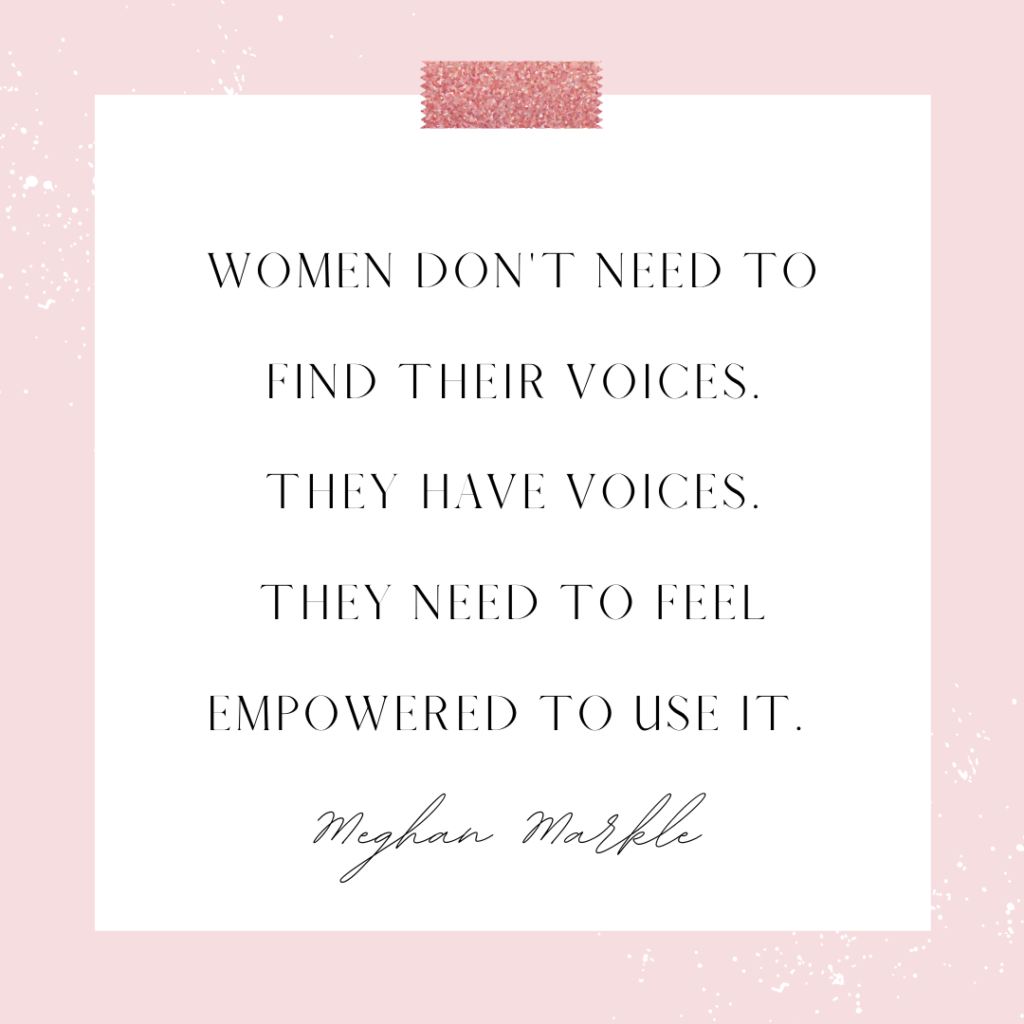As women we sometimes feel like we’re speaking, but the mute button on. Why is our message not getting through?
Being heard at work allows female business leaders to demonstrate their capability and competency, and provides and opportunity for women to feel valued and be productive contributors to a company.
But what should you do if you feel like you aren’t being heard.
Here’s 7 effective strategies to get you voice heard at work.
1. Know your style of communication
I consider this one of the most important things a leader should be aware of. Know your communication style and how this may be perceived by others.
There are four different types of communication styles – can you see yourself in one below:
Driver Style: You generally take charge and wants solutions. You consider yourself determined and decisive.
Analytical Style: You value details and accurate information. You consider yourself industrious and methodical.
Expressive Style: You love to be around others and consider yourself fun and exciting.
Amiable Style: You want to make sure that everyone gets along, and you consider yourself warm and friendly.
However, what happens when you put yourself in someone else’s shoes – how might they perceive you?
If you are:
Driver Style: Others might perceive you as competitive and pushy.
Analytical Style: Others might perceive you as critical and reserved.
Expressive Style: Others might perceive you as undisciplined or overly optimistic.
Amiable Style: Other might perceive you as conforming and dependent.
There is no right or wrong communication style, our style is our style. However you need to be aware your style and how others may perceive you. Knowing your style, allows you to adapt and self-manage your behaviour and communication patterns.
2. Be tactful in your approach to giving your opinion
No one likes a know it all, and at times others can switch off if you are constantly know for shoving your views down someone throat.
There are ways to manage giving your opinion. Try saying “I have different perspective, can I share it with you?”. This allows the other person to invite your views into the conversation, which is better than you interruption or injecting with your alternative perspective.
Other options may be to consider waiting until others have spoken, and then saying “I’ve listened to what others have said, and have some views”. This gives the view, that you have considered and value the opinion of others and here are some thoughts that may not have been considered prior.
3. Display positive body language and posture
It’s important to manage your body language when you are speaking with others, especially when you are in a meeting environment. Take a quick look at the body language and posture you are projecting and ensure you a pushing out positive vibes.
What I’m saying is – don’t have your arms crossed, be slouching in a chair, looking at your phone, or projecting body posture and language that indicates you aren’t interested in the conversation. Others will pick up on this, and when you go to speak, they may think “well you haven’t wanted to be here the whole time, why should I listen to you?”.
Another key thing is to maintain eye contact. If you are speaking to a room full of people, make eye contact with others to keep them engaged.
When others are speaking, be actively listening, put down your phone – be engaged, nod when something is said that you agree with. This will be reciprocated when it’s your turn to speak.
4. Be concise
Get to your point, make it and move on. There is nothing more irritating when someone is waffling on and won’t make the point, or they’ve made their point and they keep labouring on it. People switch off and stop listening. Has this happened to you? Be self aware and if you catch yourself waffling or constantly going over the same point, stop.

5. Speak with intent
I received feedback sometime ago from a mentor, that said “ you can be a little ‘vague’ in your dialogue”. I was surprised, and when he explained that I was using language such as “maybe, we should”, “I think”, “just wondering”, it gives the impression that you either don’t know something, or can’t make decisions. This is not a good place if you are leader.
GET INTENTIONAL. As a leader, your team look to you for direction and guidance, when you need to speak on a matter be intentional, that way there is no confusion about what is needed. Your team will respect you for your clear direction. Speaking with intent shows confidence.
I have to admit that I still catch myself using the above phases, and when I do – I correct my language. I encourage you do develop self awareness around your language and learn to be intentional.
6. Be prepared
Being prepared for meetings will give you confidence to speak up and speak with intent. If you have some thoughts and ideas, jot them down before hand. This will give you points to raise and speak to in the meeting. This also demonstrates respect for your colleagues, you have taken the time to be prepared. And believe me, this is extremely helpful in building relationships.
7. Advocate for yourself
Speak up for yourself. Don’t be afraid to raise points, if you’re concerned about your knowledge on a subject, then ask questions. Asking questions is a great way to be heard during meetings, and it shows that you are interested.
If you have been interrupted, don’t be afraid to say “excuse me I haven’t finished” or words to this effect. Only you can manage this, and if you’re worried about, maybe practice at home to be comfortable with using the saying.
Conclusion
Feeling like our voices haven’t been heard is one of the biggest issues that faces women in the workplace. To take on leadership roles, we need to deploy the above communication strategies to ensure we are being heard, and our messages are getting through loud and clear. These strategies can take time learn and practice, but they are certainly worth it in the long run.
What is the biggest communication issue you have in the workplace?
